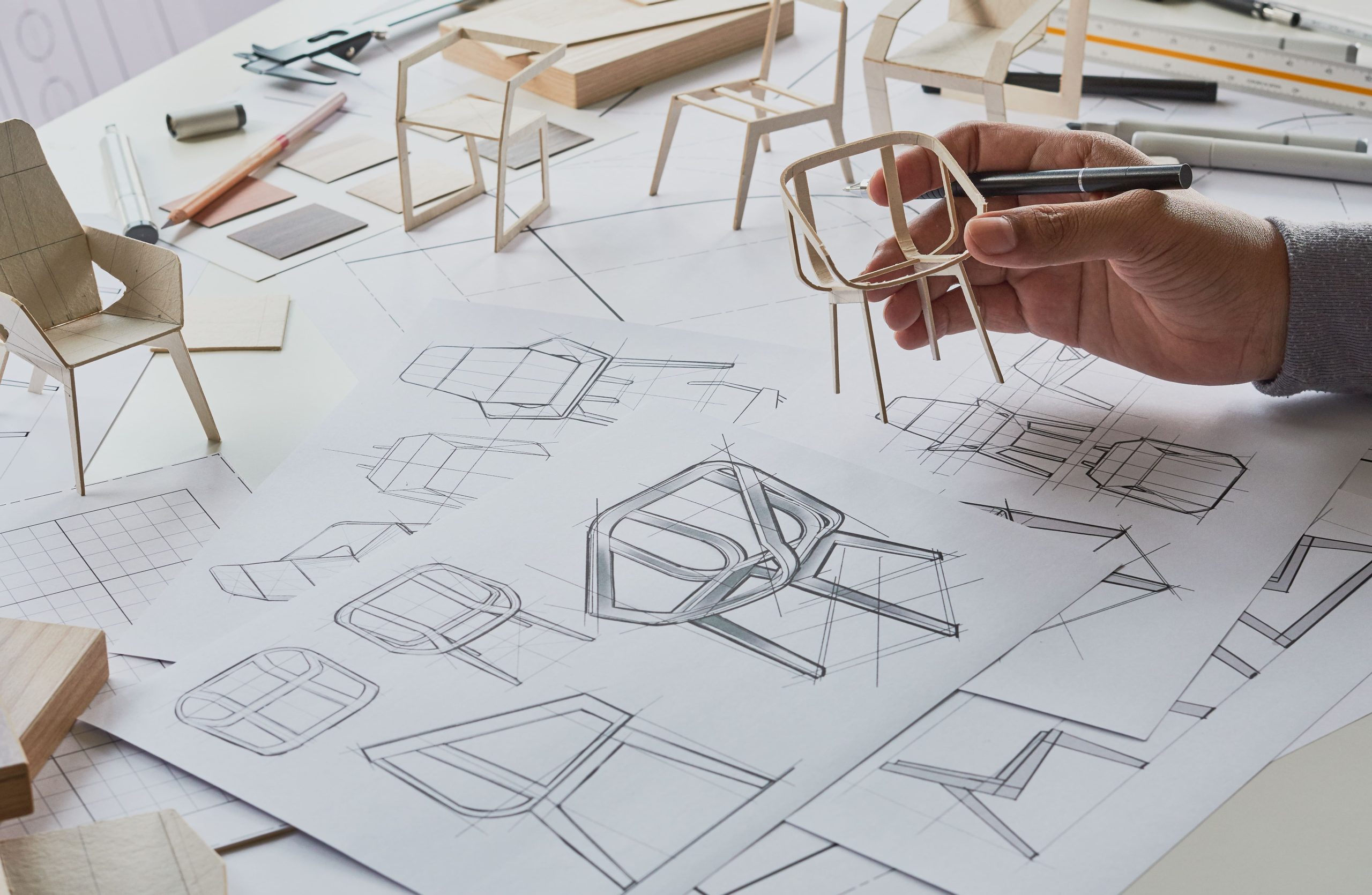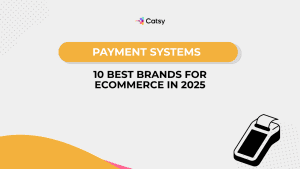A Guide to Managing Product Attributes of Your eCommerce Store

In this Article
Product attributes vary from one to another as much as people are different from each other. Does that seem weird? Just think of your product attributes in terms of the features or properties that make your product unique. Features like color, packaging, capacity, size, weight, and other physical attributes that distinguish a product tend to differ. Accurate product descriptions that detail these attributes on your product page can influence potential customers’ purchasing decisions.
Your product attributes will definitely affect your consumers’ purchase decisions. Consumers consider the product attributes highlighted on your product page or site to be unique, which can be the difference between you and the competition. You can turn a prospect into a loyal customer if they think these unique features and benefits are valuable.
You need to understand your target customers and the preferences they have for certain product attributes. This will dictate the best way to satisfy them in line with their budget. The issue of price comes into play here. Some product attributes can only be attained within a particular price range.

Tangible vs. Intangible Product Attributes
Now, you probably have an idea of this already, but product attributes can be tangible attributes or intangible. Size, color, touch, packaging, weight, volume, taste, quantity, and material composition are tangible product attributes. Intangible attributes include quality, reliability, and aesthetics, among others. For example, when driving a car, qualities like the color or the interior décor can move customers towards a particular brand. On the other hand, quality and safety tests can change the mind of the consumer in favor of a competing brand.
This is why you must manage tangible and intangible product attributes properly. Simply, they are the criteria a customer uses to arrive at his or her buying decision.
Why Choose One Product Over Another?
Before you can think of developing strategies to help you manage your products, you need to be familiar with all your product attributes. In creating compelling product content to market your products, attributes work like arrows pointing to the underlying aspects of the product. These can easily determine whether a given consumer will buy them. Let’s look at two examples.
Consider a customer walking into a fast-food restaurant. Your first thought will be the purchase of food at reasonable prices, right? Digging further, the product attributes your consumers could be looking for may include service speed, the interior décor and ambiance of the restaurant, or just the neatness of your staff. A consumer looking at cars may want reliability or durability as opposed to being focused on the car’s brand name.
However, the importance of various product attributes differ from person to person. While reliability may be a deal breaker for some, it could be aesthetics for others. It goes to show how important product ratings are with regards to product attributes. Most companies conduct extensive research on product attributes and their competitors’ methods to incorporate the best product attributes into their delivery.
You need to understand your target customers and the preferences they have for certain product attributes. This will dictate the best way to satisfy them in line with their budget. The issue of price comes into play here. Some product attributes can only be attained within a particular price range.
Importance of Product Attributes in Your Marketing Strategy
Phillip Kotler, a marketing authority discussing product attributes, said: “product attributes are the ingredients necessary for performing the product or service function sought by consumers.” There are basic attributes that customers must find in products and services. They enable the product to perform their proper functions, referred to as Points of Parity.
The absence of these must-have attributes in a product leads to a complete eviction without consideration. A movie theatre should sell treats like popcorn and drinks. We all know consumers expect to have a good time.
In the same line, there are differentiating attributes that make a product or service unique, referred to as points of difference. These features go a step further to create a unique customer experience that will delight. Still on the movie theatre, as a differentiating attribute, it can go a step further by having extra-cushy and comfortable seats for the delight of their consumers. However, it should be noted that these features gradually become points of parity with time.
Some product attributes could also be on the verge of extinction or being phased completely out of existence. These extinct and vestigial features can be modified or completely abandoned. The advancement in technology occurring at the speed of light makes it difficult in some product modifications and may require complete abandonment. Ask the companies that make videotapes and you will understand better.
There is also the presence of dissatisfaction that must be considered. These are the attributes that are abhorred by consumers and discourage them from its use or consumption. A product design can dissatisfy a consumer or the general composition of the product or service. For example, some consumers may reject your offering of fur coats because of the thought of animals being harmed in the process.
I can only imagine the wealth of product information that can be gleaned from understanding your product attributes. You need to constantly be in touch with your product features to ensure they are still satisfying the needs of consumers and going a step further to delight them.
The unique feature you offer may be your product’s saving grace when grouped in a category of products offering similar benefits, giving you a competitive edge. It is so important that consumers are beginning to choose products and services that offer more features than competing brands. And of course, the popularity of internet makes it possible to evaluate similar products in so little time.
Managing Products Attributes Aesthetic Appeal
When you hear the word aesthetics, synonyms like beauty, attractiveness, and pleasurable come to mind. Aesthetics relate to art and beauty. The aesthetic appeal of a product appeals to your five senses of sight, hearing, touch, taste, smell and of course, your emotions. Qualities like color, shape, pattern, movement, texture, scale and movement appeal to the sense of sight. Consumers can use these qualities to make their purchase decisions.
When we talk about our sense of hearing, we look out for elements like the beat, noise, pitch, tempo, and melody and volume control. Using sense of smell exposes us to elements like strength, sweetness, fragrance. Elements like texture, weight, shape, vibration, ease of use, comfort can influence through our sense of touch. To satisfy the appeal of our sense of taste, we use elements like sourness, sweetness, amongst others.
The aesthetic appeal of your product should be considered in product design. Of course, the aesthetic appeal may be the primary selling point for some products, while the reverse is the case for some. Using the example of a car, a sports car will have more emphasis on aesthetics than a family salon car which has more emphasis on durability and reliability. It will not be wise making the aesthetic appeal of a product your major selling point when it should deliver on other elements.
The importance of visual elements in influencing purchase action should not be ignored. Constantly ask yourself “how can my product beautify?” and use this answer to increase aesthetic appeal and make your customers understand why you should be at the top of their list. Marketers are gradually realizing that design of products can be a differentiating factor in the purchase of products and services.
Product Style and Design
A distinctive and unique product design and style have the capacity to add customer value. Oftentimes, the design of a product can be attributed to its looks and usefulness to the consumers. It is not enough to brainstorm and come up with an explosive idea, you need to observe your consumers and think of the benefits consumers should expect to enjoy. Doing this will expose you to the design that is best suited for your product according to the expectations of your customers.
Your winning strategy might be focusing on the design features that are unique to your product and use it to your competitive advantage. A typical example is the sleekness of Apple’s design which consumers can spot a thousand miles away.
Create new styles for your existing products. The style of your product must be captivating enough to elicit a wow expression and not a yawn. Yes, it has to be eye-catching to warrant a second, third and even a fourth look. Product design is important because the demands of customers for greater varieties are increasing on a daily basis with technological advancements; with an ever-ready switch option. Here, product lifecycle comes into play.
You need to discover the level your product is at in the product lifecycle. Is it declining in online sales and market share? If it is, you can modify some features like packaging, contents and so to re-introduce it to the market.
Key Points to Note on Product Quality
The issue of quality is a subjective one. Of course, a lot of literature has been written about quality but attacked from differing points of view. With all these numerous definitions, at the end of the day, “quality” to a consumer is achieved when the product can be used effectively. Quality is that feature that distinguishes the novice from the professional. What will bring people beating a path to your doorstep is your commitment to quality; which makes a world of difference to your customers.
Ask a regular customer which feature she would appreciate more regardless of price. The response is likely to be “quality.” Because who wouldn’t want a high-quality product?
How organized are your processes? Standardize your processes to maximize efficiency and effectiveness. This translates to recruiting and training all personnel working with you with well defined tasks to deliver and produce high-quality products. Bear in mind that your practices must align with standard industry practices.
I agree that using substandard parts, components and equipment can save you some huge bucks; however, it is an only short-term with long-term negative effects that are destructive to the growth of your business.
A lot of firms are quick to carry out quality tests at the end of their manufacturing processes. You do not have to follow the bandwagon. Infuse the quality tests into your processes and do not wait until the end. Doing so will help you uncover defective components problems which can be resolved immediately.
The increase in customer satisfaction is indications that you are doing something right; build on that and obtain feedback from customers, suppliers, and employees alike to further improve your practices. These feedbacks will help point out areas of weaknesses and strength which if resolved will help build your image as a brand and increase your overall productivity and profitability.

Quality and Positioning Strategy In Relation To Price
You should select a quality level that is in line with your product’s positioning strategy which will help consumers find an answer to the question of “why should I buy your brand?” Your brand’s positioning strategy is in their value propositions, which are benefits that differentiate your brand from that of competitors.
A company has many positioning strategies it can use. And all of them will affect the quality of their offerings. Some businesses can opt for the option of positioning their brand on a more for more strategy. With this positioning strategy, businesses provide top-of-the-line products that deliver more benefits at a higher price. Apple is a typical example of a business using the more for more approach.
Using the more for the same strategy, firms can introduce their brand into the market as one with comparable quality at a price that is lower than that of competition. Another positioning strategy is the same for less strategy. Some discount stores make use of this to appeal to consumers who don’t want to sacrifice quality.
The less for much less strategy is one that offers low quality for much reduced price, taking into account the section of the population that cannot afford the absolute best but need to experience the feel of it. For example, Southwest Airlines positioned their offerings on this strategy, offering cheap flights without the luxury of flying attached. A final important strategy involves getting more for less. This is a winning strategy because of the promise of high-quality products at a lesser price.

Packaging: the Silent Salesman
Looking to manage your product’s features? Product delivery begins with packaging, a feature that you will do well to manage properly. So, you figure you have the best solution in the market and your product should be in high demand but the opposite seems to be the case. One reason could be that there may be a defect in the packaging of your product.
You have to take charge and give your packaging a hundred percent rating. The truth is that instinct buying is taking over and that color, shape, and proximity to location are the drivers of this. Even before the logical side of you has time to reason it out, you buy. Remember, as much as you are store owners, you are consumers first! Thinking as a consumer when making product decisions is the best option you can follow.
When designing your packaging, you have to apply sensory triggers that generate emotion in the subconscious before the conscious side of your customers is awoken. With your packaging, it makes it easier for your customers to know all about your offering at a glance, further influencing quick purchase action. Your packaging should be such that it can adequately protect the contents within and stand out from the crowd on the shelf.
Your design should not be overly complex. Simple would do just fine. Nothing is more frustrating than a package that seems to provoke stress and headache in uncovering its contents.
Never underestimate the power of feelings in purchase decisions. Consumers will only purchase when a brand provokes a feeling within them. Your packaging should have the capacity of triggering an emotional engagement with your customers; making it a silent salesman!
Pull It Together
As a business that seeks to stand the test of time, it is best to remain uncompromising on the quality of your product or service offerings. However, it isn’t just for management to maintain quality processes. Instead, it requires the conscious effort of everyone within the company.
Maintaining quality practices should become a culture guiding every action through careful planning. Follow the program by implementing the plan and iteration. You can maintain quality by consistently employing best practices.
As for aesthetic appeal, research shows aesthetics is like a bridge linking products and consumer emotion. How a product looks pushes them to make decisions in the shortest of time spans. Consumers are looking for products that appeal to their emotions daily and are willing to shift to competing brands that can satisfy this. So, do not settle nor play it safe!
As a store owner, you need to determine the positioning strategy you want to incorporate into your activities and this will determine the attributes that will be accorded to your products and services, tailored to a particular customer group.
On the issue of product benefits and product features, many will base their arguments that benefits matter more. Although benefits are highly important, product attribute also plays a role in providing a competitive advantage for store owners.
Every product has a particular benefit they render. For example, mobile phones render the benefit of connectivity; facial creams render the benefit of beauty, amongst others. While all these are indisputable, consumers will likely go for products that offer features that other products do not offer within similar price ranges.
For the mobile phones, a consumer will opt for a mobile device that comes with extra features like Bluetooth connectivity, glass screen guards, phone packs as against those that come without, even if they do not understand the functions the features perform. The same applies to services. When you distinguish your services with the addition of unique features, consumers will always beat a path to the door of your store. Be it offline or online, this remains true.
However, communication tools like advertising and personal sales can change your customers’ opinions and influence their tastes. Through marketing communications, your customers can discover little known product attributes and maybe even buy something they wouldn’t have otherwise.
Now that you know how important product attribute management is in eCommerce, click here to see what Catsy can do for you.
Product information management (PIM) is a catalog software tool built to speed products to market.
Digital asset management (DAM) is a software used to organize and enrich digital assets.






